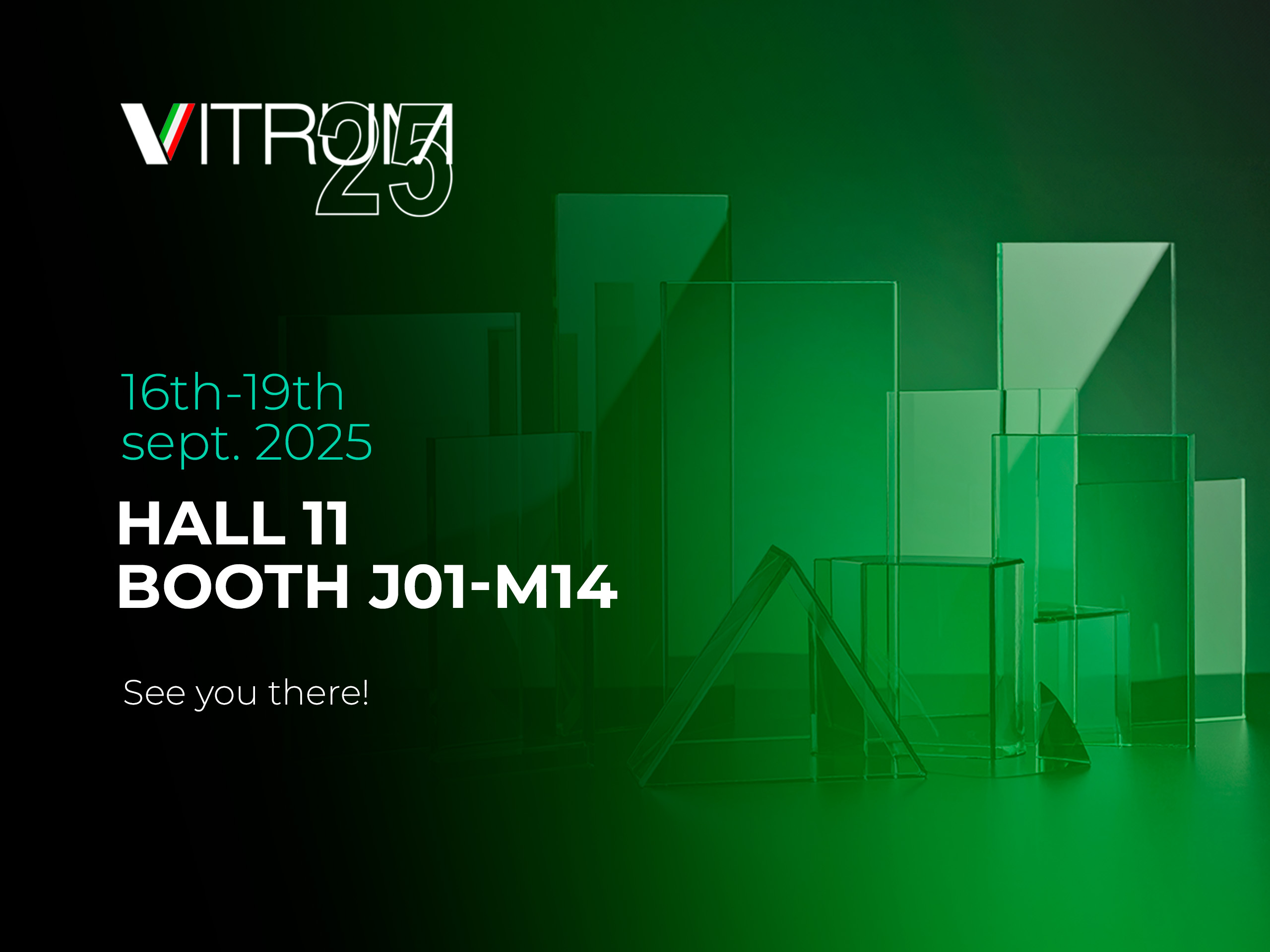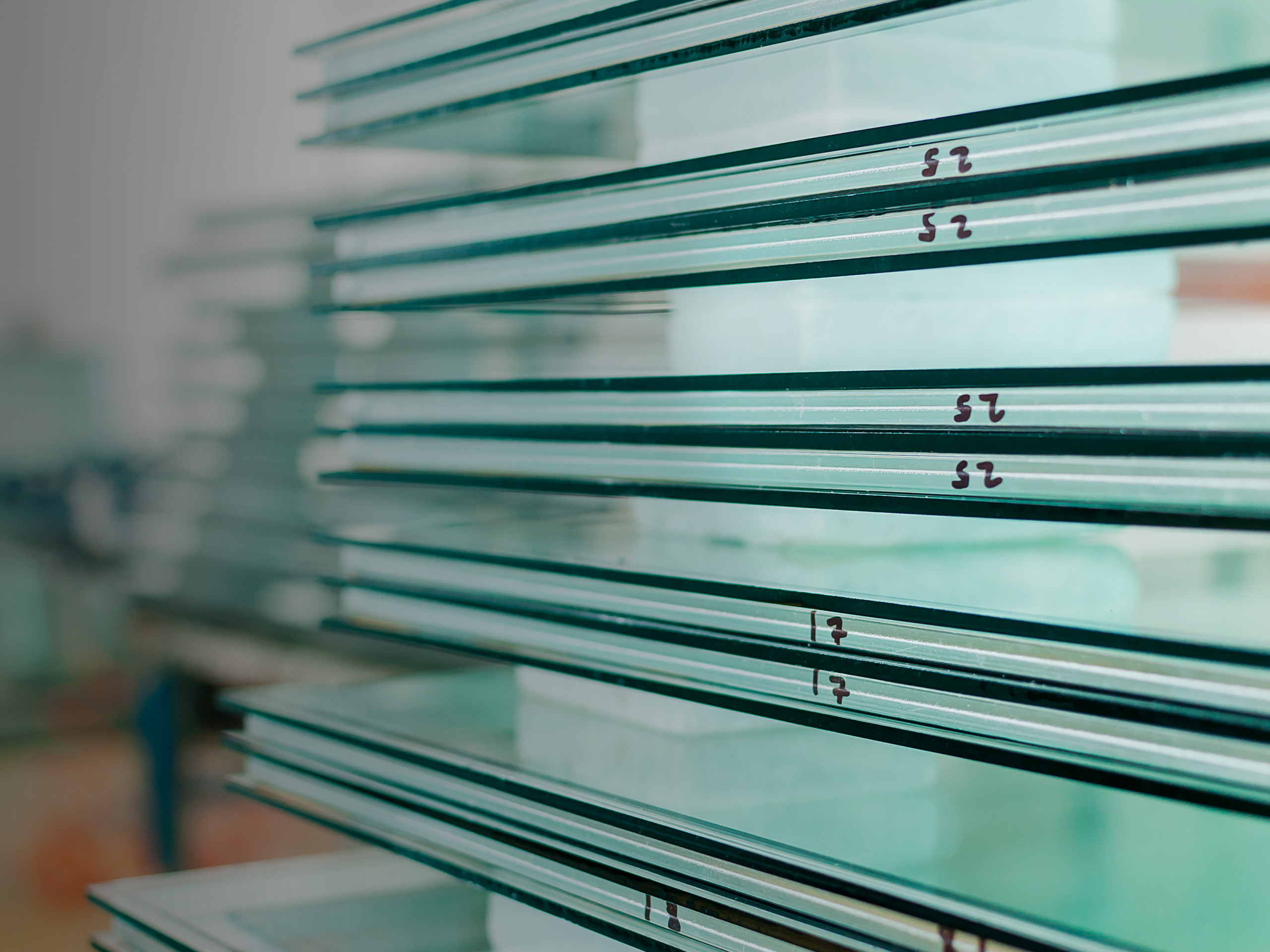Blog
Laminated glass vs. tempered glass: our processing advice

Laminated glass vs. tempered glass: our processing advice
In the realm of glass processing, two types are often pitted against each other: laminated glass and tempered glass.Both exhibit unique characteristics and find extensive use across various sectors. Let's delve into the specific features of each glass type and shed light on the challenges that the grinding process may pose for glaziers worldwide.
Laminated glass: enhanced safety in high-risk environments
It consists of two or more layers of glass bonded by an interlayer of plastic, typically polyvinyl butyral (PVB or EVA), is distinguished by its ability to maintain the adhesion of fragments to the plastic layerin case of breakage. This makes laminated glass ideal for applications where safety and protection against the risk of injury take precedence, such as in glass partitions or automotive windscreens.
Tempered glass: tempering the future of doors and windows
Produced through a process involving high-temperature heating and rapid cooling, tempering imparts increased impact resistance and results in smaller, less sharp glass fragments in case of breakage. Tempered glass is widely used in household applications such as doors and windows or in decorative glass sheets.
Key difference between laminated glass and tempered glass
Deal with the choice between these two types is not merely a matter of preference but a precise evaluation of their key differences. Let's embark on a journey into the transparent universe of glass, where each characteristic tells a tale of reliability, safety, and versatility Here are the main differences between laminated and tempered glass:
- Safety Both the type of glass offers enhanced safety compared to traditional glass, but the ability to keep pieces adhered in case of breakage makes laminated glass more reliable.
- Impact Resistance Tempered glass is generally more resistant to direct impacts, while laminated glass can endure stronger and repeated impacts over time.
- Transparency Tempered glass tends to have greater transparency, while laminated glass may exhibit a slight haze due to the interlayer.
- Applications Both are employed across various sectors, with tempered glass preferred for applications requiring higher impact resistance, while laminated glass takes precedence in safety-critical sectors.
Glass grinding techniques for laminated and tempered glass
Grinding is a crucial phase in glass processing and the differences in grinding operations between tempered and laminated glass require distinct approaches.
In the first case, grinding tempered glass is a particularly delicate procedure, which many do not recommend for the additional stress to which it is subjected to glass and which could increase the risk of its breakage. In most cases, the glass is not tempered and only in a second step the glass is tempered.However, if tempered glass is to be ground, it must be carried out with particular care and using appropriate tools and machinery to avoid excessive overheating of the glass (a condition which could compromise the acquired strength).
In the second case when grinding laminated glassthe first aspect is the total thickness of the glass and therefore the need to usually remove a large amount of glass in order to achieve the desired result. For this reason for the grinding of laminated glass are used grinding wheels with numerous cuts that have the ability to cut the film into small pieces instead of resulting in a long single strip of waste, thus preventing the film from being spread by the grinding wheels on the edge of the glass and is also easier to evacuate from the drains of the machine along with water. In applications with high aesthetic value it is also important not to tear the film from the edge and ensure a result of the highest quality.
Optimal grinding tips:
- Use appropriate tools
Investing in specific tools for processing tempered and laminated glass is crucial for achieving high-quality results. - Adjust temperature and speed
Carefully select and modulate temperature and speed throughout the grinding process to avoid compromising glass structure. - Prioritize safety
Adopting adequate safety measures during glass processing is indispensable. Utilize personal protective equipment and adhere to safety guidelines - Regular maintenance
Regularly perform maintenance on machinery and related tools (grinding wheels, arms, belts, etc.) to ensure optimal, long-term performance.
Technological innovations in glass grinding industry
In recent years, the glass grinding industry has witnessed significant technological advancements. Cutting-edge machines are equipped with advanced sensors and automatic control systems that continuously monitor temperature, pressure, speed and other critical parameters during the grinding process.
The integration of artificial intelligence has revolutionized precision and repeatability, enabling companies to automate production processes and place operators in roles where human involvement is essential.
In conclusion, achieving optimal grinding in tempered and laminated glass necessitates integrating cutting-edge machinery, innovative technologies, and customization tailored specifically for each material. Only by doing so can precise, safe, and efficient glass processing be attained, addressing the unique requirements of both glass types










